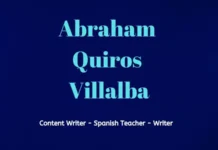Reverse Image Search, also known as “Reverse Image Search,” is a digital tool that allows users to search for information using an image as a starting point rather than text. While most of us are used to entering keywords into a search engine, this mechanism offers a new perspective for obtaining information. But how exactly does it work? Let’s dive into the fascinating world of reverse image search.
What is Reverse Image Search?
Reverse image search uses an image to search the web for similar or related images and information. Rather than typing text, you upload an image or provide an image URL, and the search engine presents you with results based on that image.
How does it work?
Image Analysis: When an image is uploaded or linked, the system analyzes the image using machine learning and pattern recognition techniques.
Feature Extraction: The engine extracts distinct features from the image, such as dominant colors, shapes, textures, and other visual elements.
Database Matching: These features are then compared against an extensive database of images to find matches or similarities.
Display of results: Based on the matches found, the search engine displays similar images, websites containing the image, or information related to the image.
Where Can You Use Reverse Image Search?
Google Images: Perhaps the most famous, Google Images allows users to click the camera icon in the search bar to upload an image and get related results.
TinEye: A dedicated reverse image search platform where users can upload images to find where they appear online.
Bing Images: Similar to Google, Bing offers a reverse image search feature.
Why Use Reverse Image Search?
Verification of authenticity: In an age of fake news and misinformation, reverse image search can help verify the origin of an image.
Find higher resolutions of images: If you find an image you like but it’s low quality, this tool can help find higher resolution versions.
Artwork Search: Ideal for identifying artists, artworks, or photographs.
Fight against copyright infringement: Artists and photographers can search their works to ensure they are not being used without permission.
Precautions to Take
While a powerful tool, it’s important to remember that not all results will be accurate. Also, while using images for research, respect copyright and privacy.
Conclusion
Reverse Image Search is revolutionizing how we interact with search engines, offering a visual rather than text-based approach. Whether checking authenticity, finding better quality images, or protecting copyrights, this tool is a lifeline in the vast ocean of the Internet.










![Imginn Instagram Story and Photos Anonymous Viewer Tool [Free] Imginn](https://www.iblogtech.com/wp-content/uploads/2023/09/imginn-150x150.webp)



